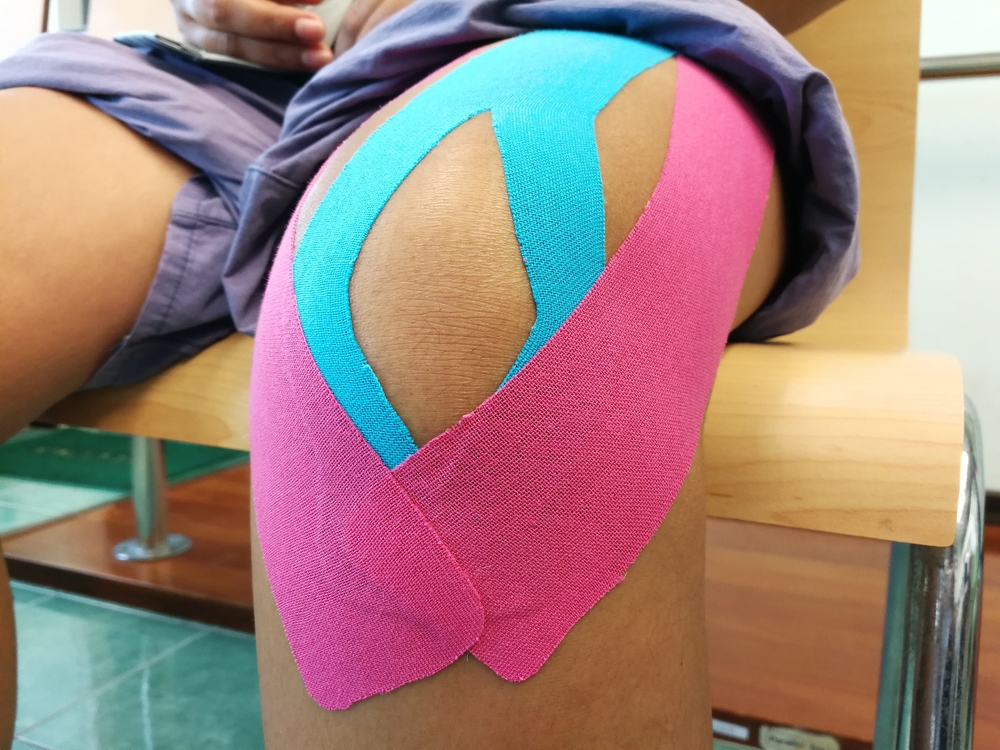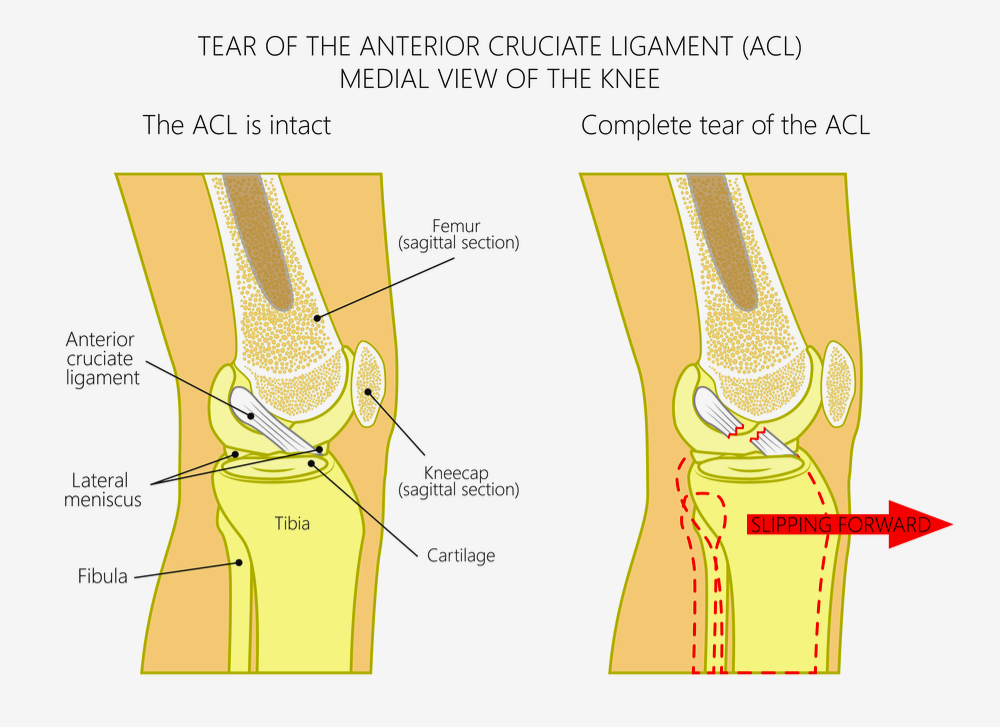ACL Injuries: 5 Common Causes and Symptoms

The ACL plays a critical role in the structure of the knee. Not only does it ensure that one can bend and maneuver the knee and leg effectively, but it also plays a large part in maintaining stability. When the ACL is damaged, though, it can pose a lot of issues for people. A fractured or torn ACL is one of the biggest fears for young and old athletes alike, for both endurance and high-intensity routines. In this post, we’ll discuss common causes of ACL injuries, as well as symptoms.
What is the Function of the ACL?
The ACL has a few key functions, all of which maintain the knee’s ability to move safely and effectively. In coordination with the PCL, or the posterior cruciate ligament, the anterior cruciate ligament, (ACL) regulates the knee’s movement.
In terms of structure, the knee joint is formed by three conjoining bones: the femur, the tibia and the patella. There are four ligaments that hold the knee together, one of them being the ACL. Running diagonally through the knee, the ACL ensures that the tibia does not slide in front of the femur. It also allows for the knee to rotate. The medial and lateral menisci aid in reducing friction.

5 Causes of Torn or Fractured ACL
1. Participating in High-Impact Sports
A high-impact sport is any sport that involves intense movement with weight-bearing joints, such as the knees and hips. Football, basketball and soccer are all examples of high-impact sports where athletes run continuously. So, running at high speeds with the potential for a high-impact fall is one of the major causes of a torn ACL.
2. Stopping Suddenly
In a similar vein to high-impact sports, athletes who stop suddenly in the course of rapid motion are also prone to torn ACLs. This sudden force can tear the ligament, causing immense pain.
3. Planting Foot and Pivoting
When an athlete plants his or her foot, and then pivots without lifting the foot, this sudden force can also damage the ACL. This is also common for athletes in high-impact sports. Changing directions while running — which often happens in sports like football — frequently cause ACL injuries as well.
4. Previous ACL Injuries
Unfortunately, previous ACL injuries such as a torn ACL increase the chance of the injury recurring. The ligament may heal, but there will likely be residual effects. So, people who have experienced these injuries are predisposed to future injuries. But, strengthening your core will go a long way in lowering the risk of an ACL injury.
5. Direct Impact
This is most common for athletes, but does not necessarily relate to the sport itself. Suffering the brute force of a direct impact hit to the knee — whether from a hard surface or from an object — can also cause the ACL to tear. This is most common when the knee is hyperextended or bent inward, and may also cause other injuries.
5 Symptoms of a Torn or Fractured ACL
1. Popping Noise or Sensation in the Knee Area
Regardless of the cause of the injury, many people experience a popping sensation in the knee, as well as a loud sound. If this sensation and noise is accompanied by intense pain in this localized region, then they are likely suffering from a torn ACL. This is the most common symptom for a torn ACL.
2. Decreased Range of Motion
After suffering an ACL tear, the bones in the knee will not have the same capability that they once did. As a result, the knee will be unable to fully rotate and extent. This decreased range of motion is a common symptom of ACL tears.
3. Swelling in or Around the Knee
After an injury in the knee, patients will likely experience pain. But, swelling may come much later. Because the ACL is not performing its function, the knee will swell, increasing for about two days, and gradually subsiding.
4. Severe Pain During Normal Activities
Immediately after the impact of the ACL tear, patients will likely experience severe knee pain. Generally, this pain prohibits them from continuing the activity they were participating in. And, throughout the course of the day, it may impact your ability to participate in other activities, too.
5. Hyperextension
When the injury occurs, it’s common for victims to feel a hyperextension sensation. Hyperextension occurs when the joint moves beyond its standard range of motion.
Find a Qualified Physical Therapy Professional
At Farmingdale Physical Therapy, our team of qualified professionals is experienced in treating ACL tears. With the right treatment plan, you can overcome your ACL tear and return to a pain and injury free lifestyle. Contact us to learn more about overcoming an ACL injury.

